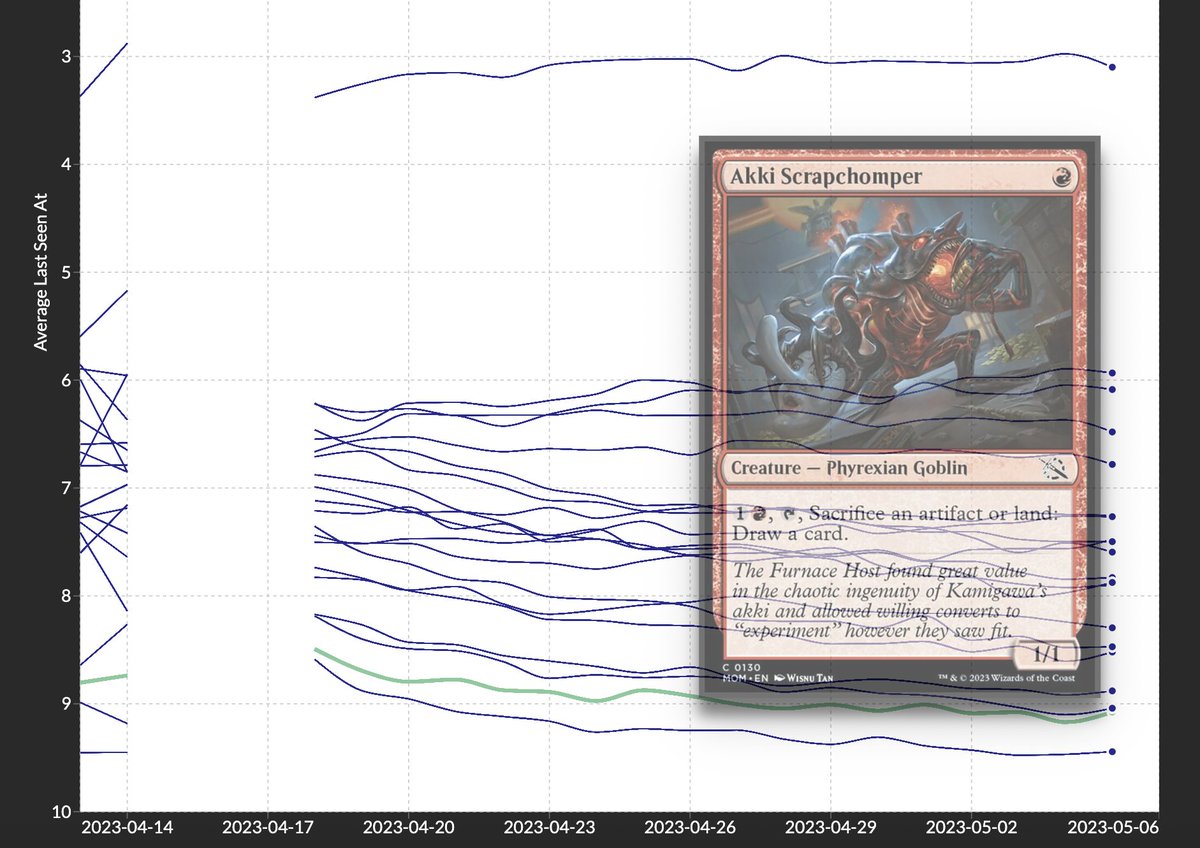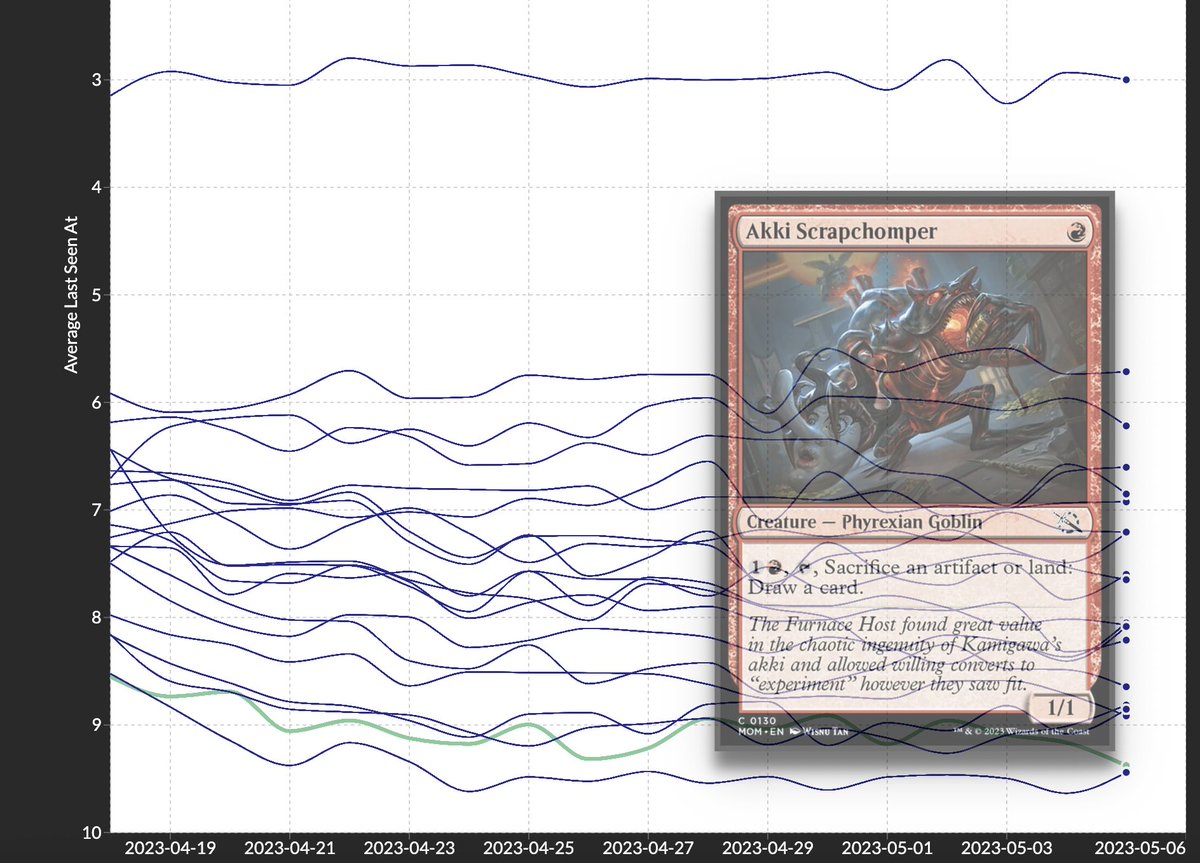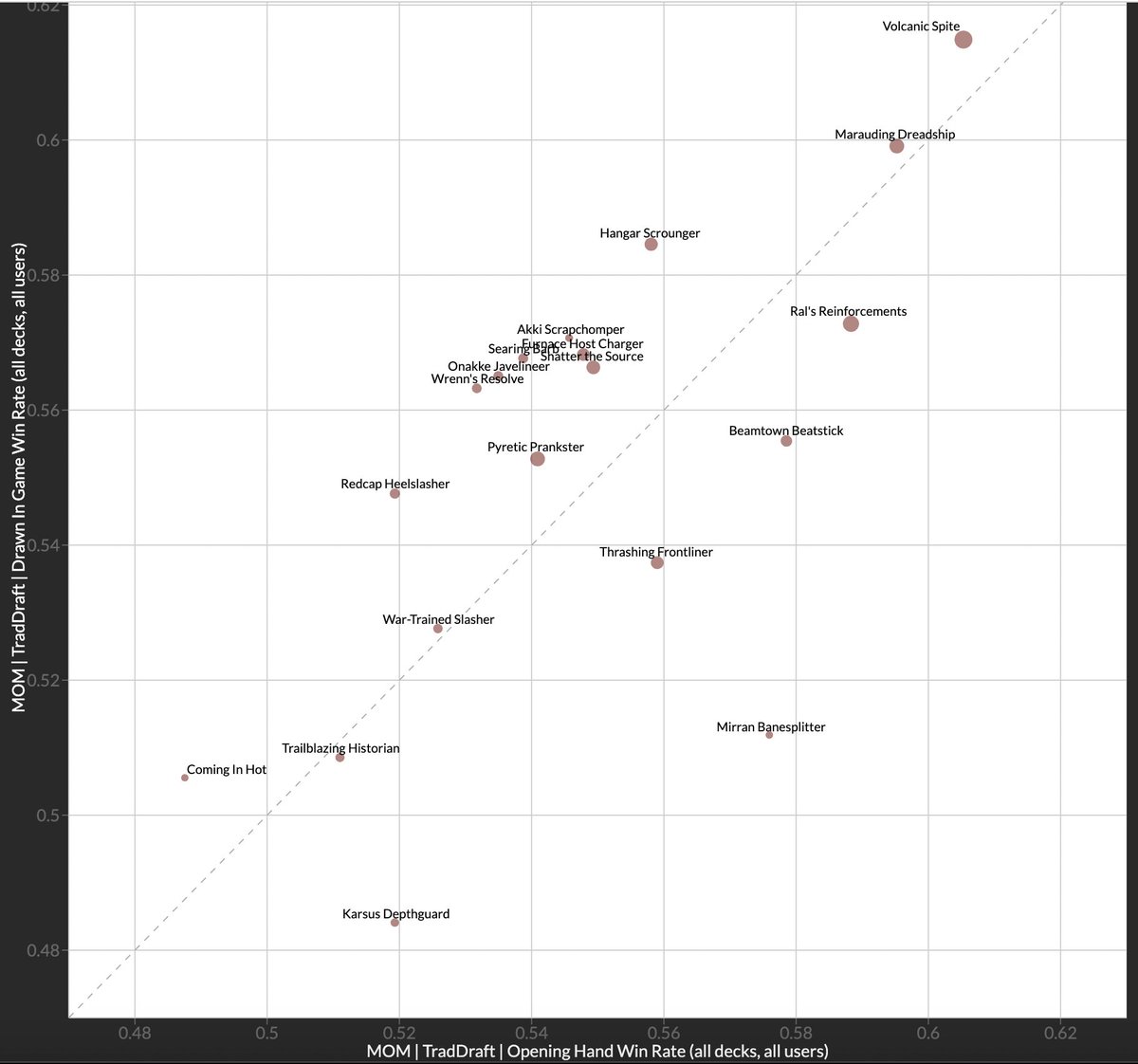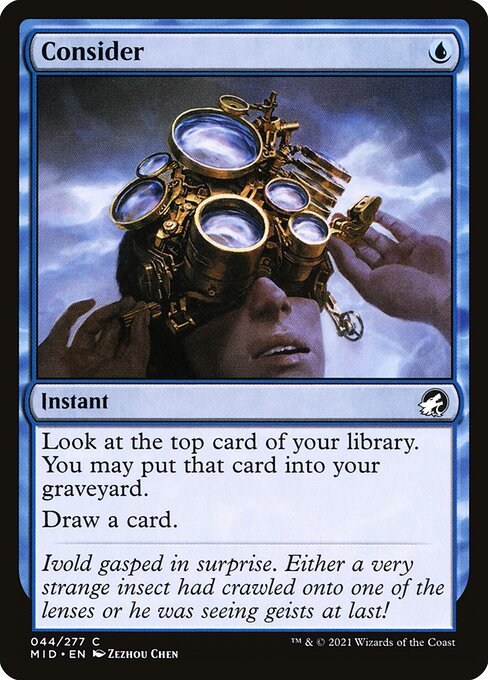Bit of a different kind of "underrated card" thread today. I usually don't do rares, and one could reasonably argue that this card is actually mostly *overrated*.
But today, I want to focus on why and how 17lands stats dramatically underrate the card Invasion of Kaldheim.
1/x

But today, I want to focus on why and how 17lands stats dramatically underrate the card Invasion of Kaldheim.
1/x


As a rare that gets picked a lot higher than I take it (3.14 ALSA in Bo3!), I don't have that much experience actually playing with the card. But it reads pretty strong to me, and has seemed impressive when I've cast it.
So why does it have a whopping *48.8%* GIH WR in Bo1?
2/x

So why does it have a whopping *48.8%* GIH WR in Bo1?
2/x


Having a GIH WR below 50% is really bad - by this metric, Invasion of Kaldheim is the 19th worst card in the set, in the vicinity of unsupported buildarounds like Kaheera, Dina, Theros, and Arcavios. If you were drafting purely based on GIH WR, you would never pick it.
3/x



3/x


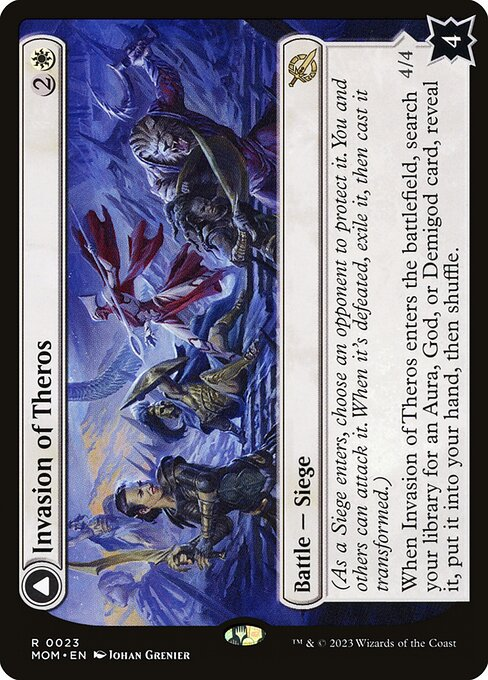
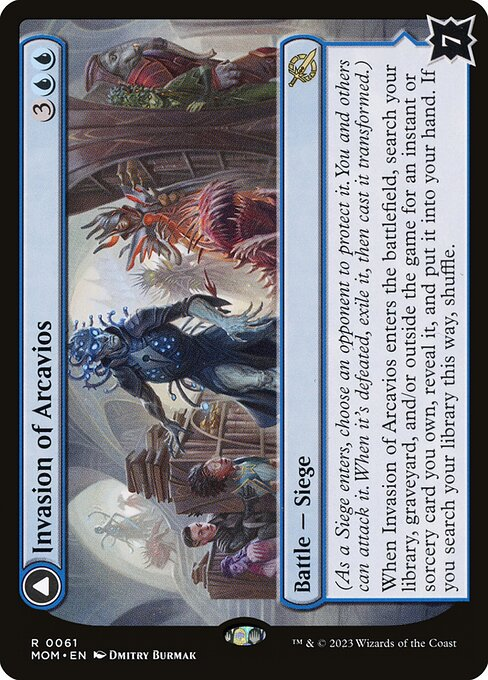
So, with stats this bad, how can I still justify defending it? Well, I think there's quite a confluence of factors dragging its stats down.
First of all: red is not a great color in this set, especially in Bo1. So some amount of the poor performance is from just being red.
4/x
First of all: red is not a great color in this set, especially in Bo1. So some amount of the poor performance is from just being red.
4/x
The GP WR of Kaldheim is 51.1% - decks playing the card win only 51.1% of the time. This is about 3.7pp lower than the format average.
And with an IWD of -3.6pp, this roughly* means that half of the bad winrate comes from being in bad decks, rather than being a bad card.
5/x
And with an IWD of -3.6pp, this roughly* means that half of the bad winrate comes from being in bad decks, rather than being a bad card.
5/x

To compound onto this factor, consider that Kaldheim is also quite highly picked for how badly it performs (ALSA 2.83, ATA 3.02). Players will take it early as a rare that looks powerful and have it pull them into red, one of the worse colors and imo a bad home for the card.
6/x
6/x

This is mostly theory and not experience, but I think the best home for Kaldheim is in multicolor green value-y decks. Card draw in the midgame plus a powerful lategame engine once it flips is perfect, and good ramp helps you take full advantage of its weird impulse draw.
7/x
7/x

On the other hand, red aggressive decks have trouble with either giving up tempo to play it on curve, or not having cards in hand after they've curved out. So if you take this highly as a reason to be in red, you're going to have an incoherent deck and drag the stats down.
8/x
8/x
This also ties into another factor: the card is deceptively hard to play. Some of this is because it's inherently awkward - draw spells are better cast late, but this needs you to have cards in hand to get value - but better players are a lot better at working around that.
9/x
9/x
As you can see, if you filter by "top users" on 17lands, the winrate shoots up to a respectable 57.3% - still lower than the average "top user" winrate of 59.8%, but a lot closer, and also even more tied to the GP WR than the IWD.
10/x
10/x

All of this is not to say that Invasion of Kaldheim is a card you should take highly - its applications are quite niche and tricky to maximize. But you shouldn't write it off completely just because of its GIH WR - 17lands is really bad at evaluating exactly these cards!
11/x
11/x
As an aggregated dataset, 17lands is naturally suited for finding broad patterns - where it shines is highlighting generically powerful cards and archetypes.
But, sadly, there is nowhere near enough data to look at all the intricate minutiae present in Magic sets.
12/x
But, sadly, there is nowhere near enough data to look at all the intricate minutiae present in Magic sets.
12/x
In a perfect world, I could query "how well does Invasion of Kaldheim perform when played by the top 1% of players in multicolor green decks in Bo3".
But in reality, if I even try to get data for "top users in Bo3", I already start running into sample size issues.
13/x
But in reality, if I even try to get data for "top users in Bo3", I already start running into sample size issues.
13/x
So if you want to get a broad sense of the format, or if you want a good starting point for getting a sense of where the good cards are, 17lands is one of your best tools.
But if you want to delve deeper, you'll have to look elsewhere for inspyration.
14/14
But if you want to delve deeper, you'll have to look elsewhere for inspyration.
14/14
*Noting here that comparing IWD and [difference between GP WR and format 17lands winrate] as a stand-in for "how much is the card bad vs. how much are the decks it's put in bad" is not an exact science, but imo a useful approximation.
Also noting that that last pun was bad.
Also noting that that last pun was bad.
@threadreaderapp unroll
• • •
Missing some Tweet in this thread? You can try to
force a refresh

 Read on Twitter
Read on Twitter






